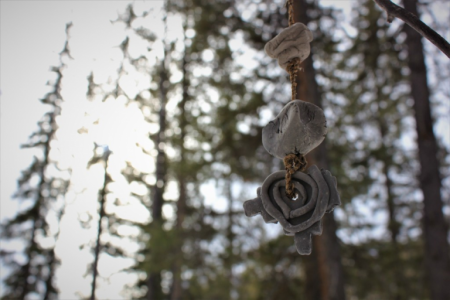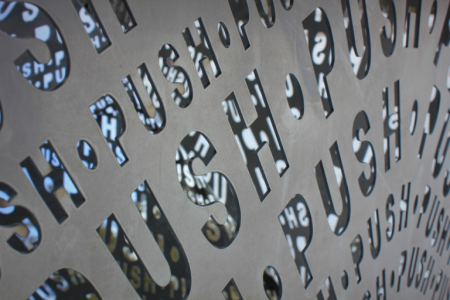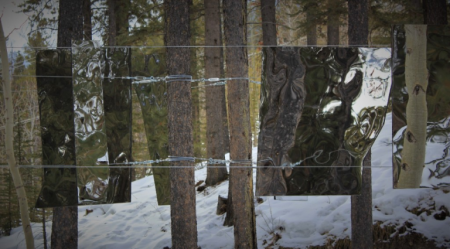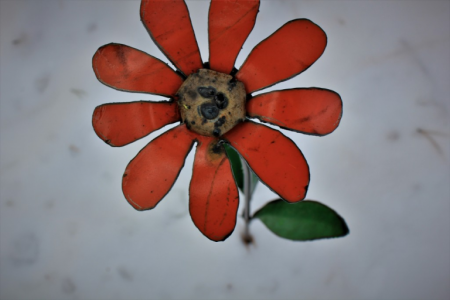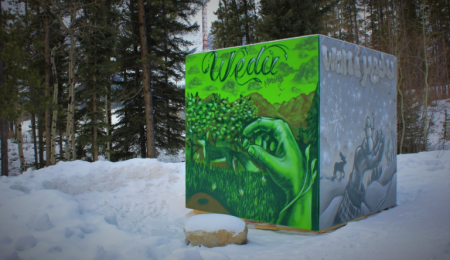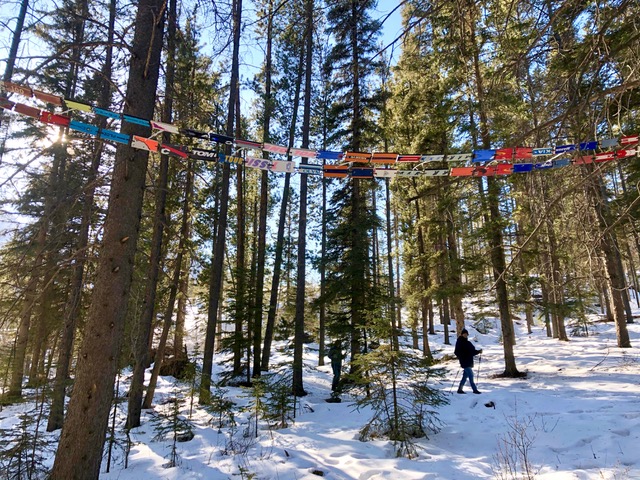
The cowbells, lycra, and the spine of the Northern Rockies as the serrated backdrop would have been part of the World Cup scene in Canmore, Alberta this past March. We all know the story: the global pandemic became a whip crack. The racing was canceled. Now, imagining the scene in Canmore, it’s easy to become wistful. Beyond the racing, visitors to Canmore missed an opportunity to experience six temporary art installations near the World Cup, all part of the 2020 Art Walk in the Woods.
The Art Walk in the Woods was a collaborative project between the Town of Canmore and the Alberta World Cup Society — part of supporting the World Cups from an arts and culture perspective. Canmore recently completed a new path connecting the town center to the Nordic Centre Provincial Park called the Legacy Trail Extension. The paved path extends roughly 1.8 kilometers.
“One of our goals was to encourage people to walk up to the Nordic Centre to watch the World Cup races,” said Nicky Pacas, the Arts and Culture Coordinator for Canmore. “We encouraged people to either walk up and take public transit down or vice versa, take public transit up and walk down to get from the Nordic Centre down to the Bow River Trail in town.”
Part of the incentive to walk along the newly minted trail were the six temporary art pieces, all installed prior to the World Cup, and intended to be removed this past April.

“When the World Cup was canceled we didn’t know what that was going to look like for the artwork,” said Pacas. “As it turned out, people started walking that trail system more and more. Because we are all isolated ourselves and people are exercising now more than ever, they are getting out of their houses and not flocking towards spaces where people are gathering but are using trail systems and getting out at different times of the day. We saw an increase in usage of that trail system and an increase in the number of people who were going past the art installations.”
With Alberta Parks shuttering provincial land, on which the art was installed, the artist and town had no reasonable way to remove the installations. The town worked out an agreement with Alberta Parks to keep the artwork in place through early July.
Which brings us to the art itself. The call for art proposals asked for installations that repurposed materials and kept disruption to the local environment to a minimum. One art piece by Calgary based artist Michelena Bamford speaks to nordic sport and the ephemeral way many of us travel on skis through the woods.
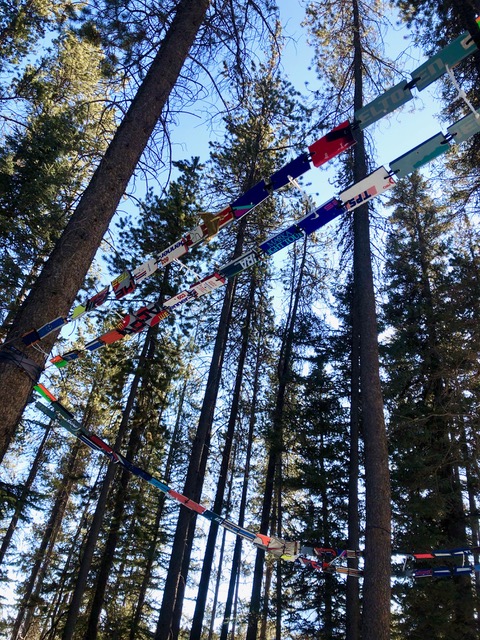
“My art practice fosters objects of meaning and memory; the sentimental tesserae of our human experience; that I reclaim and repurpose in new ways through an ancient mosaic lens. Within the context of the Nordic World Cup, skis are the perfect medium – a vibrant symbol of our human journey in the mountain wilderness,” Bamford wrote of her installation, Nordic Blessings (Fast Track).
Bamford’s installation was initially inspired by the scores of international flags lining Canmore Nordic Centre’s stadium. “That resonated with me and I wanted to reflect that color and that sort of global diversity, and that coming together of everyone at the World Cup,” said Bamford.
After walking the grounds of the race venue and the proposed art sites, she landed on an idea of using old nordic skis in her piece. With each ski being graphically unique and possessing a personal story, she intended the repurposed skis to serve as a blessing of sorts strung in the woods like Tibetan prayer flags.
“There is so much meaning and memory tied to objects, this what I love about mosaic work, it is called tesserae, the little pieces that you use. You essentially break down and deconstruct materials and then rebuild them in a new way,” said Bamford. “Those skis just have so much meaning, there are all these memories. That is why people have skis hanging around their garages forever. They just cannot let go of them. They hold this memory or they represent this place in time.”
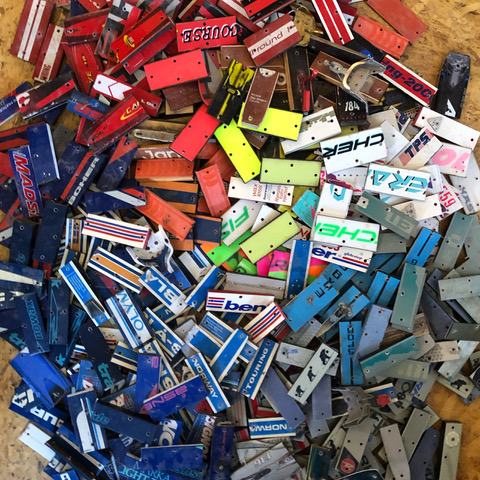
Bamford and her assistants on the project cut through 80 different skis, drill pressed holes on each side of the six-inch pieces, and linked them together in varying length parallel segments. Suspended in the woods above Canmore, Nordic Blessings resembles colorful parallel ski tracks.
Hanging the piece required no permanent fixtures but did call for a minimum height of roughly nine feet to accommodate the passing of antlers underneath the artwork; Canmore remains a place with a healthy elk and moose population.
Skis are everyday objects for many of us. There’s a child’s first pair. An old-timers last pair. Interspersed in between are the favorite pairs. Favored, maybe, not for their speed, but due to their value as an everyday object recording our memories. Bamford has hit on something with her Nordic Blessings. And it resonates.
(You can find information on Covid-19 and Canmore’s restrcitions here. The Town of Canmore website states, “the restriction on non-essential travel remains in place.”)
Jason Albert
Jason lives in Bend, Ore., and can often be seen chasing his two boys around town. He’s a self-proclaimed audio geek. That all started back in the early 1990s when he convinced a naive public radio editor he should report a story from Alaska’s, Ruth Gorge. Now, Jason’s common companion is his field-recording gear.

